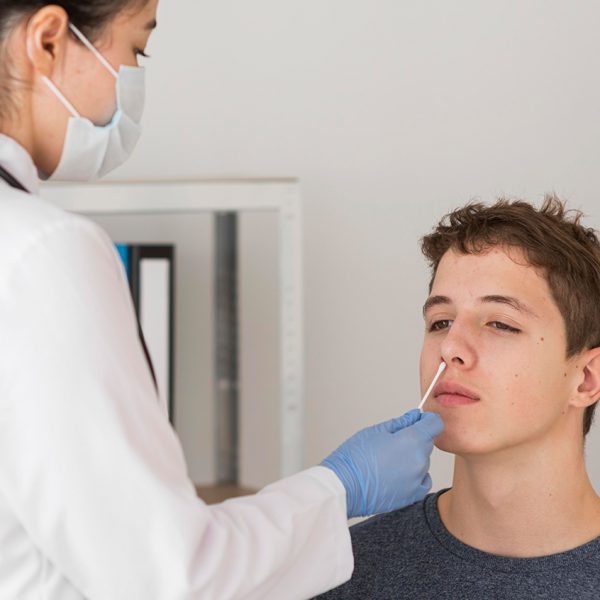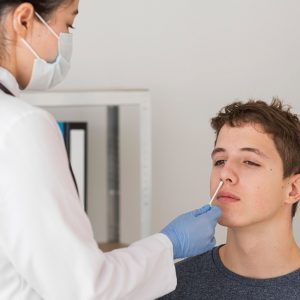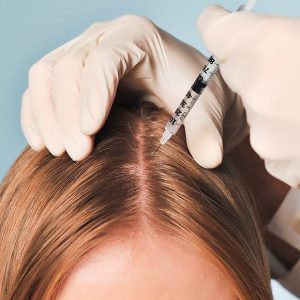Yaşam Hospital provides the Covid-19 tests in Antalya. With online booking you may have secure and fast results.
PCR Test
Warning: call_user_func_array() expects parameter 1 to be a valid callback, function 'digic_get_brands' not found or invalid function name in /home/antalyac/public_html/wp-includes/class-wp-hook.php on line 324
Warning: call_user_func_array() expects parameter 1 to be a valid callback, function 'digic_show_store_name' not found or invalid function name in /home/antalyac/public_html/wp-includes/class-wp-hook.php on line 324
| Select Hospital | Antalya Yaşam Hospital, Kemer Yaşam Hospital, ASV Yaşam Hospital, Opera Yaşam Hospital, Alanya Yaşam Hospital, Manavgat Yaşam Hospital |
|---|
You must be logged in to post a review.
Vendor Information
- Address:
- No ratings found yet!
-
Warning: call_user_func_array() expects parameter 1 to be a valid callback, function 'digic_woocommerce_template_loop_category' not found or invalid function name in /home/antalyac/public_html/wp-includes/class-wp-hook.php on line 324
Hair Transplant
€1.750,00 -
Warning: call_user_func_array() expects parameter 1 to be a valid callback, function 'digic_woocommerce_template_loop_category' not found or invalid function name in /home/antalyac/public_html/wp-includes/class-wp-hook.php on line 324
Labiaplasty Package
€1.700,00 -
Warning: call_user_func_array() expects parameter 1 to be a valid callback, function 'digic_woocommerce_template_loop_category' not found or invalid function name in /home/antalyac/public_html/wp-includes/class-wp-hook.php on line 324
Tipplasty
€2.500,00 -
Warning: call_user_func_array() expects parameter 1 to be a valid callback, function 'digic_woocommerce_template_loop_category' not found or invalid function name in /home/antalyac/public_html/wp-includes/class-wp-hook.php on line 324
Facelift
€3.300,00 -
Warning: call_user_func_array() expects parameter 1 to be a valid callback, function 'digic_woocommerce_template_loop_category' not found or invalid function name in /home/antalyac/public_html/wp-includes/class-wp-hook.php on line 324
Vaginoplasty
€1.700,00 -
Warning: call_user_func_array() expects parameter 1 to be a valid callback, function 'digic_woocommerce_template_loop_category' not found or invalid function name in /home/antalyac/public_html/wp-includes/class-wp-hook.php on line 324
Mesotherapy In Hair Loss
€175,00
Quick Comparison
| Settings | PCR Test remove | Facelift remove | Neural Therapy remove | Breast Health Package for Women Over 40 remove | Labiaplasty Package remove | Vaginoplasty remove | ||||||||||
|---|---|---|---|---|---|---|---|---|---|---|---|---|---|---|---|---|
| Name | PCR Test remove | Facelift remove | Neural Therapy remove | Breast Health Package for Women Over 40 remove | Labiaplasty Package remove | Vaginoplasty remove | ||||||||||
| Image |  |  |  |  |  |  | ||||||||||
| SKU | D2300-3-2-3-2-1-1-1-1-2-2-1-1 | D2300-3-2-3-2-1-1-1-1-2-2-1-3 | D2300-3-2-3-2-1-1-1-1-2-2-1-1-1 | |||||||||||||
| Rating | ||||||||||||||||
| Price | €20,00 | €3.300,00 | €30,00 | €99,00 | €1.700,00 | €1.700,00 | ||||||||||
| Stock | ||||||||||||||||
| Availability | ||||||||||||||||
| Add to cart | ||||||||||||||||
| Description | It is extremely possible to achieve a rejuvenation result of 5 to 10 years on the face of the patient with a facelift surgery performed with a correct planning. Under normal conditions, it is possible to say that the permanence period of this surgery is 10 years. However, one's living conditions are an important factor. Factors such as excessive smoking and alcohol consumption, a stressful lifestyle, lack of sleep, staying away from sports and exercise, inadequate and problematic eating and drinking habits, and perhaps most importantly, not taking precautions against sun damage can shorten the 10-year permanence period. | |||||||||||||||
| Content | Yaşam Hospital provides the Covid-19 tests in Antalya. With online booking you may have secure and fast results. | Today, we cannot talk about that only women prefer face lift operations, which are commonly performed for aesthetic concerns. Face lift procedures, which are also very popular among men of our age, are mostly preferred to recover skin loosening and sagging on the face after a certain age. It is not quite right to talk about an age restriction for facelift procedures, because it is sufficient for the person to feel his own face aged and to detect that the face has lost its dynamics as a result of the examination. |
What is neural therapy?Neural therapy is a regulation treatment performed by administering local anesthetics to certain parts of the body.What is the neural therapy mechanism of action?Neural therapy application is based on the regulation of our spontaneous (autonomous) nervous system. The drug used is not cortisone. It is one of the drugs called local anesthetics, which dentists also use to numb the teeth. These drugs are used by diluting them with liquids called physiological saline.Who is neural therapy applied to?Neural therapy can be applied to patients of all ages. Diseases such as blood pressure, diabetes, heart disease do not prevent treatment. Care should be taken in deep injections in patients who only use blood thinners.What ailments is neural therapy good for?
Who is neural therapy not applied to?Neural therapy is not applied in patients with known local anesthetic allergies, cancer patients and pregnant women.Is neural therapy application painful?The most commonly used technique for neural therapy is intradermal and subcutaneous applications with mesotherapy needles. Slight pain may be felt during the application, but since the drug given is a local anesthetic, the pain disappears immediately. Persistent and long-term unbearable pain does not occur.How many sessions of neural therapy are done?Although it varies according to the patient, treatment is started once or twice a week in the beginning. Follow-up applications are usually done once a week. It is necessary to put at least 48-72 hours between sessions. The total session is related to the patient’s condition. Usually, 6 sessions are sufficient.Doctor’s Note: |
Breast Health Package for Women Over 40Our Breast Health Center, which is a part of Yaşam Hospital Oncology Center, offers all the possibilities of technology to provide the best care to every woman. What is Mammography?Mammography is the low-dose X-ray imaging of the breast tissue to look for early signs of breast cancer before symptoms develop. It can also be used for due diligence when a new symptom (lump or focal pain) develops in the breast tissue. When viewed on a mammogram, breast tissue appears white and opaque (nebula), while fatty tissue appears darker and translucent.When Should a Mammogram Be Done?Annual screening mammograms are recommended for all women from the age of 40. Women who do not have any breast-related signs or symptoms are also screened. If an abnormality is present or patients have a new symptom (a lump or focal pain), additional evaluation may be required. Further examination will reveal what these suspected abnormalities are.What Percent of Women Who Have Had Mammography Have Risky Situations?Potential abnormalities are found in 6 to 8 percent of women who get mammograms. This group undergoes different additional evaluations, which may include breast physical examination, diagnostic mammography, breast ultrasound or needle biopsy.After these additional evaluations are completed, it becomes clear what the abnormalities found on the mammogram are.What Does an Abnormality Look Like on a Mammogram?The possible abnormality on a mammogram may be called a nodule, mass, lump, density or deterioration: A mass (lump) with a smooth, well-defined border is usually benign. Ultrasound is necessary to see and identify the inside of a mass. If the mass contains fluid, it is called a cyst. A mass (lump) with irregular borders or a starburst appearance may be cancerous and a biopsy is usually recommended. Microcalcifications (small calcium deposits) are another type of abnormality. They can be classified as benign, suspicious, or uncertain. Most microcalcifications are benign. Depending on how the microcalcifications appear in additional studies (magnification views), a biopsy may be recommended.What is the Accuracy Rate of Mammography?Diagnoses made by mammography are between 85 percent and 90 percent accurate. Mammograms can detect breast abnormalities before they are large enough to be felt. However, a palpable mass may not be seen on a mammogram. Any abnormality you feel while examining your breasts should be evaluated by your doctor.What Should Be Considered Before Mammography?You can follow your normal routine before the mammogram. You can take your medications and maintain your eating and drinking patterns. If you are breastfeeding, pregnant or think you may be pregnant, you should tell your doctor as your mammogram may need to be postponed.What Should I Pay Attention to When Coming to My Mammography Appointment?The technician will ask you to remove one breast from your bib at a time and place it on the chest support plate. The image of the breast is taken by clamping it between two plates. In the meantime, pressure is applied to the breast, preventing the breast from moving. This pressure spreads the breast tissue, allowing the radiologist to see the tissue better. Also, the least amount of radiation is used when the breast is compressed as finely as possible. You may feel some discomfort during 3-5 seconds of pressure. If you cannot tolerate the pressure, please let the technician know. Pressure can be more bothersome at some times in a woman’s menstrual cycle. To minimize discomfort, we recommend scheduling your appointment seven to 10 days after the start of your period.How is a Mammogram Taken?The technician will ask you to remove one breast from your bib at a time and place it on the chest support plate. The image of the breast is taken by clamping it between two plates. In the meantime, pressure is applied to the breast, preventing the breast from moving. This pressure spreads the breast tissue, allowing the radiologist to see the tissue better. Also, the least amount of radiation is used when the breast is compressed as finely as possible. You may feel some discomfort during 3-5 seconds of pressure. If you cannot tolerate the pressure, please let the technician know. Pressure can be more bothersome at some times in a woman’s menstrual cycle. To minimize discomfort, we recommend scheduling your appointment seven to 10 days after the start of your period.How Does the Process Proceed After Mammography?There may be temporary skin discoloration and/or mild pain in the chest due to compression. Most women will be able to resume their normal activities soon after their mammogram. Your results will be available within a few days after the test. After getting the results, your doctor will explain everything to you.How Often Should You Have a Mammogram?Regular mammograms every year, starting at the age of 40, will enable you to recognize potential risks early.What Does the Breast Health Package Consist of?Breast health package consists of General Surgery Examination and Mammography |
Labiaplasty PackageLabiaplasty is a surgical procedure to reduce or enlarge the skin folds that usually surround your labia and vagina. Excess skin can be bent and pinched, causing discomfort during exercise, physical activities, and sexual intercourse. Depending on why the procedure is performed during labiaplasty, your doctor may: It removes some tissue from the labia to reduce its size. Injects filler or oil to enlarge the labia. It forms a labia from other tissues.What are the reasons for requesting labiaplasty?Reducing labia minora size Excess lip tissue can be bent, twisted, compressed. This, can cause physical discomfort and irritation during exercise, physical activities (such as cycling or jogging), and sexual intercourse. Reducing the size of the labia minora may be desirable to improve hygiene and health, as excess tissue can make cleaning difficult and may harbor bacteria that can lead to the development of urinary tract infections.Cosmetic and emotional reasonsTo have a younger appearance after birth or aging, Reducing asymmetry of the labia minora or labia majora when one side is longer or has a different shape than the other, To increase self-confidence and to eliminate visual lines and protrusions when wearing body-fitting trousers or tights, During close contact, labiaplasty can be performed to improve comfort, confidence and sexual health regarding the appearance of your genitals.What causes an overgrowth of a labia?Age, menopause, or other hormonal changes can thin the labia majora tissue, causing the labia minora to protrude from the labia majora. Pregnancy and childbirth. Changes in your weight. Genetic.What are the pre-operative procedures?First, you and your doctor will discuss why you want to have labiaplasty and make sure that the surgery will meet your expectations. During the physical examination, your doctor will explain where the incisions will be made and what to expect regarding changes in the size and shape of your labia. After the surgery decision, your doctor will inform you in detail about the preparation processes for the surgery. In this process, your doctor will inform you about how to resize or reshape your labia (labia majora and/or labia minora) and will enlighten you about the surgical procedure to be applied.What is the procedure after labiaplasty surgery?After the surgery, your doctor will give you the necessary information on how to care. Carefully applying the information conveyed to you about what you should and shouldn’t do during the recovery process will speed up your recovery process. We also recommend that you make your control appointments before leaving the hospital.What are the risks and complications of labiaplasty surgery?
Is the recovery process painful after labiaplasty?
Will it bleed a lot?You may have a small amount of bleeding for a week. This is normal, you can use pads to absorb the blood.When will the satisfactory results of labiaplasty be obtained?Initial swelling, pain, and temporary discoloration subside within a few weeks after surgery. However, you may have to wait up to four to six months to see the final results of your labiaplasty. Post-operative scarring is usually negligible.How do I wash my labia area?Use only warm water to wash your wound (do not use soap) and wipe gently, do not rub the surgical site. It is important to follow your doctor’s instructions to keep the surgical site clean and free of bacteria and to speed the healing of the surgical site.When can I return to work, physical activity and sex life?You should be able to return to work and other light activities after a few days. If your job involves intense physical activity or lifting weights, you can get more detailed information by informing your doctor about this. until your doctor approves. |
VaginoplastyVaginoplasty is a procedure to repair the vagina. It treats a variety of medical issues, including vaginal enlargements from childbirth and complications of pelvic floor disease.What is done during vaginoplasty?The details of the procedure vary depending on your goals and medical needs. The vagina is reconstructed using various surgical techniques.Who needs vaginoplasty?
What is the difference between vaginoplasty and other vaginal operations?
What is done before vaginoplasty?
What is the content of the procedure in women with postpartum deformation?
What is the content of vaginoplasty to repair congenital (birth) defects?
Risks / Benefits
What is the recovery process like after vaginoplasty?
How are the controls planned after vaginoplasty?
| ||||||||||
| Weight | N/A | N/A | N/A | N/A | N/A | N/A | ||||||||||
| Dimensions | N/A | N/A | N/A | N/A | N/A | N/A | ||||||||||
| Additional information |
|
|
|
|
|















Reviews
There are no reviews yet.